Are your teeth crooked? Does your bite seem slightly off? Are your gums receding? Let me guess, you want to fix a few orthodontic issues, but you aren’t sure about plunking down thousands of dollars for Invisalign.
My Invisalign Experience
Well, I’m here to help. I’ll tell you everything you ever wanted to know about Invisalign but were too afraid to ask. The details below document my Invisalign experience and the experiences of others I know. The details included here stem from my Invisalign experience. I didn’t receive compensation for writing this post. I just wanted to help others who are searching for more clarity on the Invisalign experience before paying to use it.
My Invisalign Review
This post is my honest and unbiased Invisalign review. It includes the details of my year-long Invisalign journey. If you are searching the internet for Invisalign reviews for adults, be very careful. A lot of information is misleading.
For example, I recently found Invisalign competitors writing negative reviews to sell their line of clear aligners. Be wary of websites promoting Invisalign alternatives.
Bad Invisalign Experience
Before starting Invisalign, I wanted to learn as much as I could about the process. I knew I needed a solution for my slightly crooked teeth and misaligned bite, but I felt incredibly nervous about using invisible Invisalign aligners to fix them.
To ease my mind, I searched the internet for information that could help. Most dental websites present positive Invisalign reviews, but I wanted to read honest, unbiased reviews from actual patients.
Invisalign Ruined My Teeth
I found examples of clients who thought Invisalign ruined their teeth. Their negative Invisalign reviews included lists of problems, complaints, and mistakes. Invisalign failures and horror stories made me hesitant to try Invisalign for myself. But then I wondered, what could I learn from each bad Invisalign experience? What could I learn from the people shouting, “Invisalign ruined my teeth!”
Why did Invisalign fail in some instances? Why did some patients fail to achieve perfect smiles, and what could those negative Invisalign reviews teach me? The start of my Invisalign journey led me to the answers.
The Start of My Invisalign Journey
Before I signed up for Invisalign, I created a list of questions. Here are a few of them:
- How does Invisalign work?
- Does Invisalign hurt?
- Will my teeth look perfect after Invisalign?
- What can go wrong with Invisalign?
- Can Invisalign cause gum recession or black triangles?
- Does Invisalign cause cavities?
- How long does Invisalign take?
- How much does Invisalign cost?
I can now answer these questions, and many more, including: is Invisalign worth it? I’ve been an Invisalign patient for over one year now. I just finished the process and can now provide the details from my Invisalign journey. This post is my honest Invisalign review. It includes the details I wish I had known when I was beginning.
I started wearing Invisalign in September of 2018 and wore them through 2019.
In 2019 I finished wearing my last Invisalign tray. I immediately wrote down everything I could remember about the Invisalign experience. I hope this Invisalign review will help you.
In 2020 and 2021, I visited my orthodontist for periodic inspections. She ensured my Invisalign retainer fit as tightly as my last Invisalign tray.
It’s now 2022, and I’m still happy with my decision to use Invisalign as my teeth straightening solution. I wear a retainer nightly to ensure my bite doesn’t shift and that all of my teeth remain in their optimal positions. It’s been three and a half years since I started the Invisalign process and I still think the money, time, and effort were worth it.
Choosing an Invisalign Provider
Where’s the best place to start? Well, right from the beginning, of course. Before we dive too deep into the nitty-gritty details of Invisalign, let’s talk about how the whole process works.
First, you will visit your dentist or orthodontist for an evaluation. If you don’t have a trusted relationship with your practitioner, now is the time to scour your area for a new one.
Choosing an Invisalign provider you trust is the most important part of this process. You want to feel comfortable asking questions and raising concerns. The Reddit Invisalign subgroup is full of patients who aren’t sure about their provider’s choices. It’s okay to ask the internet for a second opinion, but you need to feel confident talking about treatment options with your provider too.
Ask your provider how they handle questions and complaints throughout your Invisalign experience. Do they always make time to talk to patients during their appointments? Will you see the dentist or orthodontist every visit?
I visited two dentists and an orthodontist before making my decision. My dentist turned me away for Invisalign treatment. She said, “If you need extensive tooth movements or bite improvements, you may want to seek out an orthodontist. Orthodontists receive extra training in the art of teeth straightening.”
Fortunately, my teeth were relatively straight before Invisalign. Unfortunately, I needed Invisalign treatment to fix bite problems that were leading to bone loss and gum recession.
Negative Invisalign Reviews: Invisalign Gone Wrong
My dentist’s words echo all across the internet. Most negative Invisalign feedback comes from patients who are unhappy with their final results. Why would a patient have a bad experience with Invisalign? Most negative Invisalign reviews blame dentists who fail to move teeth properly.
Invisalign Can Ruin Your Teeth
What can go wrong with Invisalign? You can end up with bad results: crooked teeth, cavities, gum disease, jaw pain, or a misaligned bite. In other words, you can spend a ridiculous amount of money and end up with more dental issues than you ever imagined.
Invisalign Complaints

The majority of Invisalign complaints fall under five main categories: treatment time, crooked teeth, improper alignment, cavities, and black triangles.
To avoid bad Invisalign results, you need to understand your provider’s role in the Invisalign process. Contrary to popular belief, Invisalign treatment is more than a series of plastic trays.
Unlike Smile Direct and other at-home aligner companies, Invisalign provides you with a professional to oversee the entire tooth-moving process.
Throughout your treatment, your provider will make adjustments to the computer-generated Invisalign plan. Your provider can tweak the refinement plans and force stubborn teeth to move when things get off track. If your provider lacks experience, Invisalign could ruin your teeth.
Invisalign Bad Results
Bad Invisalign results happen when teeth don’t move the way the provider expects, and this can result in jaw pain, gum disease, poor alignment, and crooked teeth.
Keep in mind that dentists and orthodontists both attend dental school, but orthodontists undergo additional years of training to learn how to align teeth and improve bite issues.
That extra training doesn’t mean orthodontists will perform the work perfectly. It also doesn’t mean you need to choose an orthodontist over a dentist. It just means you should investigate the options thoroughly before choosing a provider.
Having gone through the Invisalign experience myself, I would never choose a dentist over an orthodontist, but of course, that’s just my opinion.
Invisalign Horror Stories & Regrets
Most Invisalign horror stories come from patients who used dentists for their Invisalign treatments. It’s up to your provider to decide what to do when teeth don’t move. In the worst-case scenarios, dentists keep patients trapped in never-ending treatment cycles or, worse yet, give up, leaving patients with bad results.
Some adult patients say Invisalign is the worst mistake of their lives. Think carefully before choosing a provider, and don’t let that person be you! Unfortunately, Invisalign horror stories lead to Invisalign regrets. Invisalign can be a very good or bad experience depending on who performs the work. If you don’t want to regret your Invisalign experience, search for a well-trained provider you can trust.
Are My Teeth Too Bad for Invisalign?
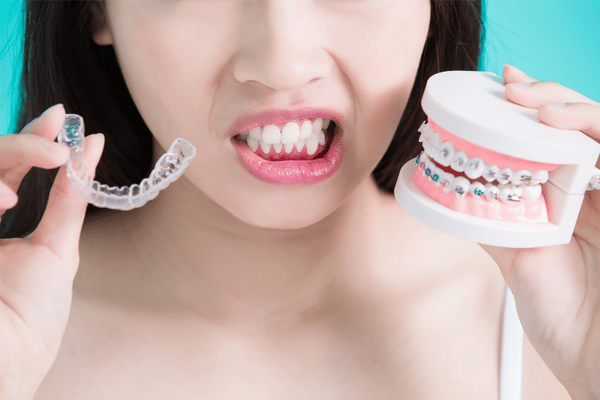
Invisalign users run the gamut from those requiring very little work to those who need extensive tooth movements. If you aren’t sure if Invisalign will work, talk to your dentist or orthodontist openly and honestly about your concerns.
Significant tooth movements will undoubtedly take longer than a few minor adjustments, and in some severe cases, braces are a better alternative. Orthodontists can make additional adjustments that aren’t always possible with Invisalign trays.
Is Invisalign Worth It?
Before plunking down thousands of dollars and years’ worth of time, you want to know is Invisalign worth it? Is Invisalign worth the time and money?
The Invisalign journey isn’t an easy one. It takes a lot of patience to wear Invisalign trays twenty-two hours a day for months and years. Are the sacrifices worth the reward of straight teeth?
If your provider performs the work correctly, Invisalign is worth it. It doesn’t matter if you require significant changes or a minor case of teeth adjustment.
The key is to find an experienced, well-trained provider to perform your dental work. If you choose Invisalign go or Invisalign express, pay extra special attention to your provider’s success rates with these tools. Both have short durations and little room for errors.
Invisalign Reviews & Ratings
Before choosing your provider, remember that a quick Google search can reveal a wealth of information from prior patients. Invisalign ratings depend on the success of each patient’s Invisalign journey. Simply type in your provider’s name and search for their ratings and reviews. Read each Invisalign review carefully.
Before and After Invisalign
Many providers maintain a portfolio of before and after images from former Invisalign patients. Ask your provider if they can show you examples of other patients with similar problems. If your teeth need a lot of adjustments search through the books and look at before and after photos of the worst cases. Look through each of these photos carefully.
Don’t just look at the way a patient smiles. Make sure that you can view each patient’s mouth from the top, bottom, front, and sides. Remember, you can’t see misalignment without looking at those profile images. A smile can look beautiful but not function properly when a bite is misaligned.
Check to see if the patients’ teeth are straight and well-aligned.
Does the reality of your providers’ before and after Invisalign images match your expectations? Do you like the Invisalign results you see?
Invisalign Expertise
Invisalign categorizes providers by the number of cases they handle. A more experienced provider will be more familiar with complex cases than one who has treated fewer cases. Again, this is just one of many critical criteria to consider.
If you choose a provider with more experience you’ll likely have better Invisalign results.
Here are the current categories and the associated number of cases per year.
- General Provider – 10 Invisalign cases per year
- Elite Provider – 300 cases including a minimum of 50 every six months
- Top 1% – 800 cases including 200 cases per year
Many negative Invisalign reviews are written about providers with less knowledge and experience. Providers with more expertise may cost more, but this is one of those instances where you don’t want to choose the cheapest option.
Initial Consultation
Most Invisalign providers offer a free consultation. That means you don’t have to use the first provider you meet. Instead, you can visit several dentists and orthodontists until you find one that helps you feel comfortable.
During that first appointment, the orthodontist or dentist will look at your teeth, the shape of your mouth, and your bite (underbite, overbite, open bite, etc.). After taking a look, they can determine if you are a candidate for Invisalign and discuss the plan for orthodontic treatment.
While Invisalign can correct many orthodontic issues, it cannot fix all of them. In severe cases, your provider may recommend jaw surgery or traditional braces as alternatives.
Once you choose a provider and determine that you are a candidate for Invisalign, the real fun can begin. During your initial consultation, your provider will take photographs of your teeth and face along with a series of x-rays.
At this point, some providers will use an impression kit to take a mold of your teeth, while others will use a scanning machine to create a three-dimensional, digital image.
Up-To-Date Invisalign Technology
Here is another place where negative Invisalign reviews swayed my purchasing decision. My Invisalign provider uses 3-D digital imaging equipment, which provides a highly accurate picture of my teeth.
If your provider doesn’t have state-of-the-art technology, they’ll need to use molds. Molds aren’t entirely accurate. Plus, they are unbelievably messy and uncomfortable. The orthodontist fills a mold with goo, presses it into your mouth, and waits until it hardens a bit before she removes it. Some people won’t be bothered by this process, but I hate it. I had it done as a teenager eons ago, and I still haven’t forgotten it.
The digital scanner is painless, super quick, and unbelievably accurate. I decided to use a provider that avoided that whole messy process, and I’m super thankful I did. A friend of mine chose a provider who used molds and had a really bad experience with them.
How Does Invisalign Work?
Invisalign will use that information to create a step-by-step computer model showing exactly how each aligner moves teeth throughout your treatment.
Your provider will review Invisalign’s proposal and make any necessary tweaks before finalizing the plan. Then Invisalign will create a series of aligners that straighten teeth. As part of the treatment plan, you will receive a ClinCheck image and video that depict each tooth movement.
Now you are probably wondering how Invisalign works, and will Invisalign work for you? How do those clear aligners move your teeth?
Invisalign captures a three-dimensional image of your teeth and creates a plan to subtly move each tooth over the course of your treatment. Each clear aligner moves teeth ever so slightly. When you begin treatment you’ll receive a set of aligners that don’t straighten teeth. The first set helps you get used to the Invisalign process.
Invisalign Aligners
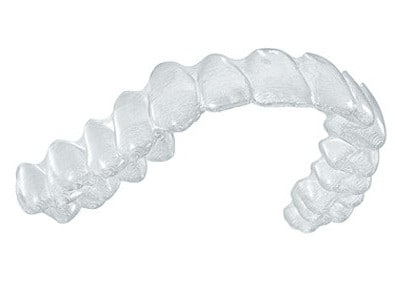
The subsequent clear aligners will slowly shift teeth into their projected places. After one or two weeks, you will switch to a new set, which will subtly move your teeth again. Your teeth will continue to move ever so slightly with each new tray. Treatment will end when you don’t need any further movements.
To get your teeth to move, you must be a vigilant Invisalign patient and keep your trays in for roughly twenty-two hours each day. The trays will not work if you don’t keep them in your mouth. Also, your teeth will try to slide back into their old positions if you don’t wear your trays often enough.
To avoid an extra-long Invisalign experience, you must wear your Invisalign trays as directed. If you don’t, your teeth won’t move as expected, and you’ll have to extend the timeline for your treatment. Without near-constant wear, you won’t get the Invisalign results you are expecting.
How Long Does Invisalign Take?
The average treatment time according to Invisalign is between 12 to 18 months. I’ve spoken to a lot of Invisalign patients and their initial Invisalign estimates ranged between 9 and 18 months. Though in reality, no one I met finished in the projected amount of time.
In fact, everyone I know spent an additional six to nine months wearing them. Invisalign says this occurs when your teeth don’t move as projected.
During the consultation, my orthodontist provided a ten-month estimate. I wore the first set of trays for slightly less than one year.
Then I moved to the second set of aligners because one of my teeth did not move as expected. That resulted in another two months of Invisalign.
I think each case is unique, but for the most part, the timeline for Invisalign seems to move forward and not back. I’ve never met anyone who finished treatment earlier than expected. Those people may exist; I just haven’t met them.
To avoid a bad Invisalign experience, make certain to pay attention to how well your trays fit. If you notice a problem, schedule an appointment to see your Invisalign provider. If your teeth stop tracking, you may need further refinements, which will lengthen your overall treatment time.
How Do I Know If Invisalign Is Working?
If your teeth continue to track and your trays are snug and form-fitting, the Invisalign system is working. Aligners must remain tight against your teeth. If you begin to notice gaps between the bottom of your teeth and the tray, it means some of your teeth aren’t moving as expected.
These tiny pockets of space will grow larger and larger as you continue to switch to future trays. Sometimes your provider will ask you to wear a previous tray until your tooth catches up. Other times they will move on and address the issue with refinement trays.
This typically happens for one of two reasons. Either you didn’t wear your trays the projected twenty-two hours per day, or you have a stubborn tooth that is difficult to move. Invisalign requires due diligence, to get the most out of your treatment you need to wear your Invisalign aligners as much as you can.
Bad Invisalign Experience
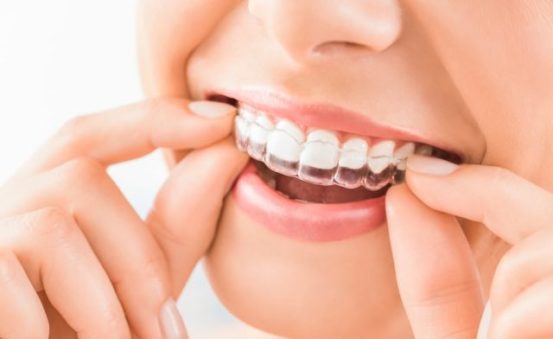
The majority of negative Invisalign reviews mention crooked teeth, improper alignment, jaw pain, cavities, black triangles and the unexpected length of time it takes to complete the Invisalign journey. If your teeth don’t track as expected, you will wear trays for much longer than initially projected.
This is another reason to choose an orthodontist rather than a dentist. A dentist will order more Invisalign trays and hope that your teeth eventually move. This can quickly turn a patient’s one-year Invisalign journey into two or three.
On the other hand, an orthodontist has many different tooth-moving options available to them. If a back tooth doesn’t move, the orthodontist can give up on Invisalign and move on to metal braces that can quickly move that stubborn tooth for you.
I know, I know, you are trying to avoid metal braces, right? But would you rather stay in Invisalign for twice as long or wear traditional braces for a few short months. I’d choose metal braces anytime.
Does Invisalign Hurt?
My Invisalign pain was pretty severe for the first few months. The pain wasn’t intense when a new set was on my teeth, but pulling them off was incredibly painful. Chewing for the first few weeks made me cry.
If you’ve had orthodontic treatment as a child, a new set of Invisalign aligners feels like getting traditional braces tightened.
As the months wore on, I adjusted to the pain. Either that or the movements were more subtle, so the pain was less severe. It does get better with time. I’m now in my second set of refinements, and my teeth haven’t hurt much at all.
In fact, I can a new set of Invisalign aligners off and eat something hard and crunchy without giving it another thought. If you don’t have many movements or attachments, you might not experience much pain.
Invisalign Hurts
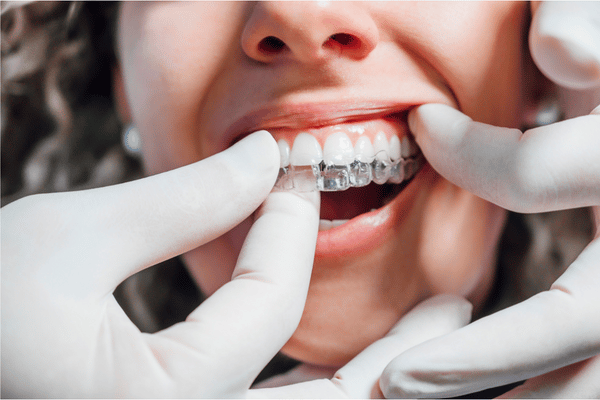
If you are considering Invisalign, check out the Invisalign thread on Reddit. Invisalign reviews vary by patient. Some clients provide glowing reviews of their providers and experience, while others write a long list of grievances.
That’s why I wanted to add my voice to the internet. I wanted to provide an honest Invisalign review that covered every aspect of the process that I encountered.
Some Invisalign clients experience a lot of pain throughout the process, while others only have issues with specific trays.
Unfortunately, there is no way to know what you will feel until you get them. Just know that pain is a real possibility. A lot of patients didn’t realize that they would be in pain. I wasn’t prepared for severe Invisalign pain either.
It helps to go into your treatment plan knowing what to expect. Yes, you might experience severe pain for a few weeks, but it does get better.
Is Invisalign Noticeable?
Okay, now let’s talk about the visibility of Invisalign. If you are choosing Invisalign over standard braces, it’s because you don’t want people to see those bright and shiny metal brackets and wires in your mouth, right? You are searching for a subtle tooth-moving solution to straighten teeth.
Is Invisalign noticeable? Yes. Invisalign is visible, especially if you need many attachments (often referred to as buttons) on your teeth. People will see and notice them.
Think about it this way. In close-up photographs, they will be visible, but in group shots, you don’t see them.
This isn’t a problem as long as you aren’t under the impression that no one will notice your desire for straighter teeth. Invisible braces don’t exist. If you are searching for a virtually invisible solution, you will be disappointed. Invisalign is less noticable than traditional braces, but you can see them when standing close.
My Dentist Told Me To Eat With Invisalign
Here is another thing you don’t realize about Invisalign until you get them. Eating becomes a real pain.
When I first thought about getting Invisalign, I turned to friends for advice. One friend said, “my dentist told me to eat with Invisalign.” Eating with Invisalign isn’t possible. You can’t eat with the trays on. They are plastic and uncomfortable. Not to mention you risk breaking the trays or causing damage to them.
I don’t know what kind of dentist says you can eat with Invisalign, but they are wrong. Food would get into all of the nooks and crannies, and quite frankly, it would be gross. If your dentist tells you this it’s time to search for a new one!
Eating with Invisalign
So if you can’t eat with Invisalign, what do you do? You take them out, but you can only spend two hours a day without them. So you have to rush every meal.
It takes five minutes to brush and floss your teeth after you’re finished. You will brush your teeth three times a day. That means you will spend at least fifteen minutes in the bathroom each day.
If you spend fifteen minutes going to the bathroom and brushing your teeth, you have less than two hours to eat per day. That may seem like a decent amount of time, but think about how long it takes to receive two courses in a restaurant or to wait a few minutes after dinner to eat dessert.
Do you know what’s really hard about Invisalign? You can’t taste your food while you cook it. Imagine cooking a delicious meal and not being able to season it appropriately. You can’t figure out if you need more salt because you can’t take your Invisalign out for just a second to taste it and then pop them back in.
You can’t do that because you have to brush your teeth again every time you take your aligners out. And if you taste while you cook, you will have to rush to eat to meet the twenty-two-hour rule.
Snacking is out of the question and mindless eating will become a thing of the past. It’s just not worth it to brush and floss for a small meal, so in the beginning, I only ate two meals a day. My teeth hurt so much that it was easier to turn away food, but I was constantly hungry.
Invisalign will radically change the way you eat. You will find yourself hungry at parties but unwilling to eat. It’s a lot of effort to brush after every meal. When you eat, you will spend the whole time watching the clock to know exactly how many minutes you can spare before popping them back in.
Eventually I began intermittent fasting. I would eat during a very small window of time and then fast for 15 to 16 hours a day.
Eating With Invisalign: The Invisalign Diet
That brings me to the Invisalign Diet. If you’ve ever wanted to lose weight and have your teeth look straight, then Invisalign might be suitable for you. I’m only half kidding.
As I mentioned above, you will not snack if you have Invisalign. You will not even want to eat three meals a day. When you eat, you will scarf down your food so you can put your aligners back in. In other words, eating with Invisalign is an absolute pain.
Unfortunately, plaque buildup and cavities can occur even if you brush and floss rigorously. Oral hygiene is crucial during Invisalign treatment.
I find myself limiting sugar a lot. Two bites of chocolate cake aren’t worth three new fillings!
How to Clean Invisalign?
Having Invisalign is like a glimpse into old age. I can now picture myself taking out my dentures and popping them into a big mug of bubbly, green cleaner.
I keep a mug on the counter specifically for my Invisalign trays, along with an extra-large box of Polident three-minute cleaner. Any time I eat, I drop the clear aligners into that mug and throw in half a Polident.
It helps to keep my Invisalign clean and clear, though it’s important to note that I never drink anything other than clean, pure water when they are in.
I know some folks drink beer or other beverages, but I a too prone to cavities to risk that stuff sitting on my teeth while my aligners are on.
If I’m out somewhere, I place my aligners in the case and brush them with a soft toothbrush and toothpaste before putting them back in.
Invisalign makes me avoid eating away from home. It’s another reason why I feel like I’m on the Invisalign diet. It’s not particularly pleasant to brush your teeth in a public restroom. I don’t want to use the sink water to clean my brush, and I don’t want any part of my toothbrush to touch the sink. If I can avoid eating out, I do.
Invisalign Black Triangles
Invisalign brochures typically show bright white, perfectly aligned teeth surrounded by pink gums. Unfortunately, this is not always the result.
More often than not, gums can’t form between overlapping teeth. When those crowded teeth are straightened, black triangles form between the newly straightened teeth.
If your teeth are triangular black triangles are more likely to form. When teeth are rectangular, they can touch each other and sit side-by-side in your mouth without showing any unwanted space.
Unfortunately, triangular teeth only touch at the tips. As you traverse to the gum line, the teeth no longer touch, and black triangles appear. These gaps appear between teeth and between the tooth and the gum.
IPR for Black Triangles
Treatment may include interproximal reduction (IPR), which involves shaving the sides of your teeth so the teeth can touch again. Dental bonding and papilla injections can also be used to fill in the missing spaces.
Some patients refuse IPR. The thought of grinding down perfectly good teeth doesn’t sit well with everyone. If you are nervous ask about this when your orthodontist discusses your plan for treatment.
While I realized black triangles might be a slight possibility, I wasn’t aware of the extra work or maintenance involved in maintaining these ‘fixes’ throughout my lifetime.
For the time being, I’ve decided not to fix the small black triangles that have formed between my lower teeth. My retainers are still pushing my teeth together ever so slightly, so I’ll see how things look when I receive my permanent ones.
My Teeth Aren’t Perfect After Invisalign
Update: My black triangles got larger after treatment finished. The spaces between the teeth in the bottom-front of my mouth are the worst, but they are not visible when I smile.
I would encourage you to ask your provider about black triangles. Some don’t like to perform IPR, so this is something you should discuss in advance. It’s perfectly understandable to feel unhappy about Invisalign if black triangles form. No one wants perfectly straight teeth with dark triangles between them.
Your provider can’t guarantee that these won’t show up, but they can tell you how likely they are and how to deal with them when and if they do.
Invisalign Retainer – The Fun Never Ends
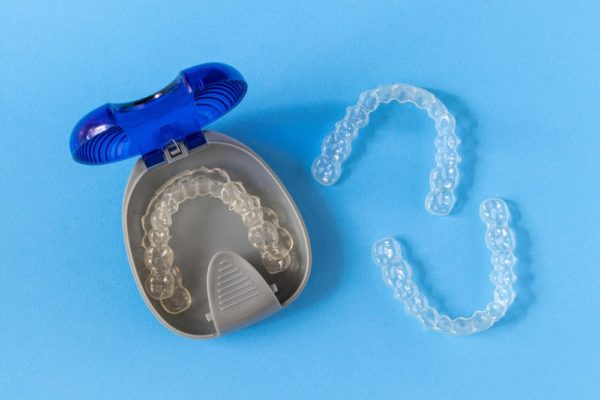
In a perfect world, when you finish all of your trays, your Invisalign journey will be over, right? Well, kind of. When your treatment plan is complete, the orthodontist will make an Invisalign retainer for you. You will wear it for roughly twenty-two hours a day for a few weeks or months. Then you switch to wearing it only at night.
The retainer is essential. It ensures that your teeth don’t revert to their original places in your mouth. And after all of the pain and not eating, you will never want to go through this experience again.
So you will be more than happy to wear that retainer for the rest of your life!
Invisalign is Worth It
When former Invisalign users saw my aligners, they often shared their stories. They told me how long they had to wear them and how difficult it was to avoid snacking for months and sometimes years.
Their stories are all different. Some had gum issues, some had bite issues, and most had crooked teeth. As we talked, I ask them all the same question: “Is Invisalign worth it?” While I wore aligners, they all told me it was.
My Invisalign journey is now over, and I agree! Invisalign is worth it. My teeth are straighter, and my bite feels perfect!
Will My Teeth Look Perfect After Invisalign?
Are you expecting perfect teeth after Invisalign is over? If so, you are not alone. Most patients expect perfect smiles.
Did I achieve a perfect smile? No. My teeth aren’t perfect after Invisalign. One of my bottom teeth is ever so slightly crooked after treatment. Does it line up perfectly with my other bottom teeth? No, it doesn’t. Can anyone else tell? Doubtfully.
Did tiny black triangles open up between a few of my bottom teeth? Yup, I have those too. Does anyone notice? I doubt it.
Invisalign Reality
Do you dream of having a perfect smile? If so, can your Invisalign reality match those expectations? Will your smile be as glamorous as you hoped? Will your Invisalign results be everything you imagined?
Honestly, probably not. After staring at your teeth day in and day out for weeks, months, and possibly years, you will become hyper-aware of how your teeth look. You will also stare at other people’s teeth to see if they are straight, white, and beautiful.
But here’s the truth, very few people are staring intensely at your smile. While your teeth may not be perfect, most other people aren’t as critical of your smile as you are.
Your Invisalign expectation may not match your Invisalign reality, but your smile should look a whole lot better than when you started. If you are searching for perfection, you might not find it with Invisalign.
Of course, your satisfaction depends on what type of Invisalign results you are expecting. Invisalign won’t change the shape or color of your teeth. If you are searching for perfection, keep in mind that most movie stars implore other dental techniques to create those pearly white smiles.
Does Invisalign Work?
Since this is an honest review, I wanted to include extra details about my Invisalign experience. Invisalign is an alternative to braces, but before signing up, I wondered if it would work. I wondered if Invisalign was legit. Could those clear aligners move all of my teeth the way the ClinCheck video projected?
The answer is not exactly. Orthodontists have a much easier time making some tooth movements with traditional braces. While Invisalign moved most of my teeth, it could not move one of them as quickly as braces.
Does Invisalign always work? In my case, it worked for most of my teeth, but one of my back molars was severely rotated, and Invisalign was unable to turn it properly into the correct position. Even though I wore my aligners twenty-two hours a day, one of my teeth failed to track.
Invisalign Versus Braces
My orthodontist said we could try another round of refinements or simply place three metal braces on my teeth to move that one stubborn tooth more quickly.
I opted for braces because they couldn’t be seen when I smiled. The tooth moved in just three weeks. Invisalign may have worked, but it would have taken months compared to traditional braces. In this case, Invisalign was inferior to braces.
Invisalign works for many patients, but in this case, braces were needed and preferred.
Some patients believe Invisalign is a scam, but it can work for you. It depends on what adjustments need to be made to your teeth. In some cases, braces are simply better than Invisalign. The right orthodontist can help you decide what’s right for you.
Your Turn
Have you used Invisalign? If so, how was your experience? Did Invisalign work for you? If you had to do it all over again, would you?
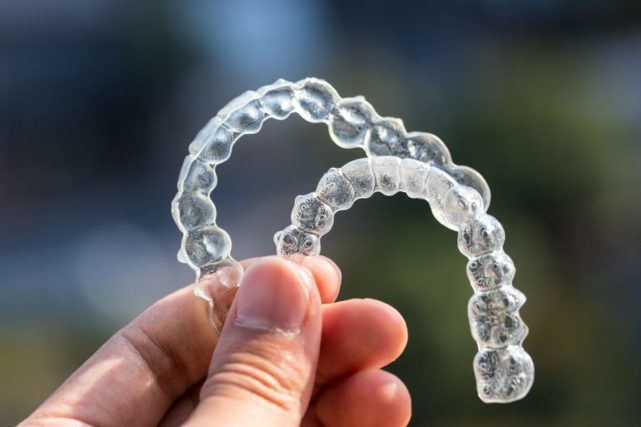
How disheartening to read so many stories where Invisalign was not a good decision. It’s my understanding (now and too late for my case), that originally Invisalign restricted its packages to orthos only and then allowed dentists to perform this. I trusted my dentist and completely regretted it. The sad news that you’ll learn quickly if something goes wrong, is that Invis is very hands off. Because the agreement is with your provider NOT Invis (despite it being their product). If I could do this again, I would choose an ortho that way if it goes haywire, I could at least switch to traditional braces. My Ivisalign treatment was costly, ended up taking twice as long as estimated, and ruined my bite.
I’m sorry to read this. I didn’t know Invisalign originally restricted its product to orthodontists. Honestly that makes a lot of sense. I hope that you are able to resolve your issues and improve your bite.
I saw my dentist as I need a partial denture. I was told I needed the Invisalign first, but I disagree. On that visit, I was told I needed both the upper and lower. I don’t agree.
I am seeing the dentist again next week to discuss this issue. It felt rushed, and I felt uncomfortable as I need teeth…. I have never been told by another dentist that my bite was off or my teeth were crooked. I signed finance papers, and I have an appointment in 2 weeks for them to be ready. I think these should have stayed with the orthodontists…
I am surprised that dentists are able to provide Invisalign to their patients.
Yes they can. It is just a little course that they have to take in order to get invisalign certificate.
I had very bad invisalign treatment. My bite is missed aligned, I lost one tooth. And one tooth has been damaged permanently (bone loss). I can not replace missing tooth with implant as the space is insufficient (my dentist did not move teeth properly to create normal space). I can not eat my food properly, I can bite it in small peace’s and sometimes I chocked on my food due to incorrect bite that my dentist created. I end up having more problems that I started with. At the end I find out that the dentist who done my treatment is general dentist not an orthodontist. I personally think general dentist must be banned from doing such a treatment. Also I met a lot of people that their invisalign was bad also. People please do not get it! My worst decision ever!!!!!!!!!
I would recommend regular braces, I got Invisalign, and my teeth literally shifted back to their original placement. Wasted all that money to not be happy. Don’t always listen to them when they say you’d be a good candidate or whatever do your research. I paid so much money to in the end start researching regular braces.
I had Invisalign treatment through an orthodontist on the US west coast about 7 years ago. I had no problem. He provided me with a retainers. Again, no problems. Three years later or so, I moved to the east coast. One of my retainers broke, and my dentist here I saw provides Invisalign treatment, so I ordered new retainers from him in January 2023. After wearing them for a few weeks, my mouth and tongue was burning. The insides of my mouth got very sensitive, and my cheeks and chin were kind of numb. A few weeks after that, I stopped wearing the retainers. After two days, my symptoms were about 80% gone. But still, 3 months later, my gums are sensitive, and my tongue and the inside of my mouth is very sensitive to irritation to foods, and sometimes, my tongue becomes numb. Buyer beware. I will never put plastic in my mouth again.
Thank you so much for this, I am in Australia and have spoken to a number of people about getting Invisalign. Those I have spoken to have loved their dentist treatment and have had great results. But your blog has really helped to understand some of the less noted things like the “invis dite” and pain. I thought these might be issues, but it was great to have such a frank discussion. Fortunately my Helth cover will cover half of the cost but these ae still important things to note and comprehend as my dentist really did not discuss these.
I’m so glad to hear that there are still good things to say about Invisalign! I’ve been wearing them for about two years now and I’ve never been happier. The only downside is that it’s a bit expensive,
I started with Invisalign when I was about 60. For various reasons, it took about twice as long as they suggest. In the end, the crooked tooth was about 90% straight. Not perfect, but better.
Fast forward a few years — I have had many issues with my molars. I suspect it’s connected to the Invisalign. I’ve needed 2 root canals, and 2 crowns, and finally I had to have them both extracted and now I have 1 implant. On the diagonally opposite side, I have needed root canals.
Would I have done it if I’d known this? Maybe. But it would have been good to have been aware of the potential issues and additional costs.
I read this review and it is good but it does seem one biased. What is not taken into consideration is the risk of posterior open bite issues that are very common with the aligners and that there are orthodontists who do prefer the traditional method. I am now at 18 months with my aligners and was advised that the process is about 18 to 20 months, non of the pros and cons were discussed perhaps the only pro was the esthetics during the treatment. My teeth needed some alignment for the front and pre-molar. It should be the responsibility of the orthodontist to relay to a patient the risks and benefits of the aligners. My front teeth are aligned but not centered and visually apparent and there is ~4 mm of posterior open bite make it it difficult to chew. The gum line appears to have resided further. I have completed 17 months and it looks like there is another 12 months to go to also correct the front alignment. The orthodontist appointments were also sparse so no corrections were possible. In hind-sight, I should have opted for the traditional method to avoid a prolonged treatment. I recommend do your research of the pros and cons more thoroughly and make your decision. I regret, that I should have gone the traditional way.
I completely agree with the point about the initial discomfort. I experienced it too during my Invisalign treatment. However, I would like to know more about the maintenance and replacement of the trays. Can anyone share their experiences with that?